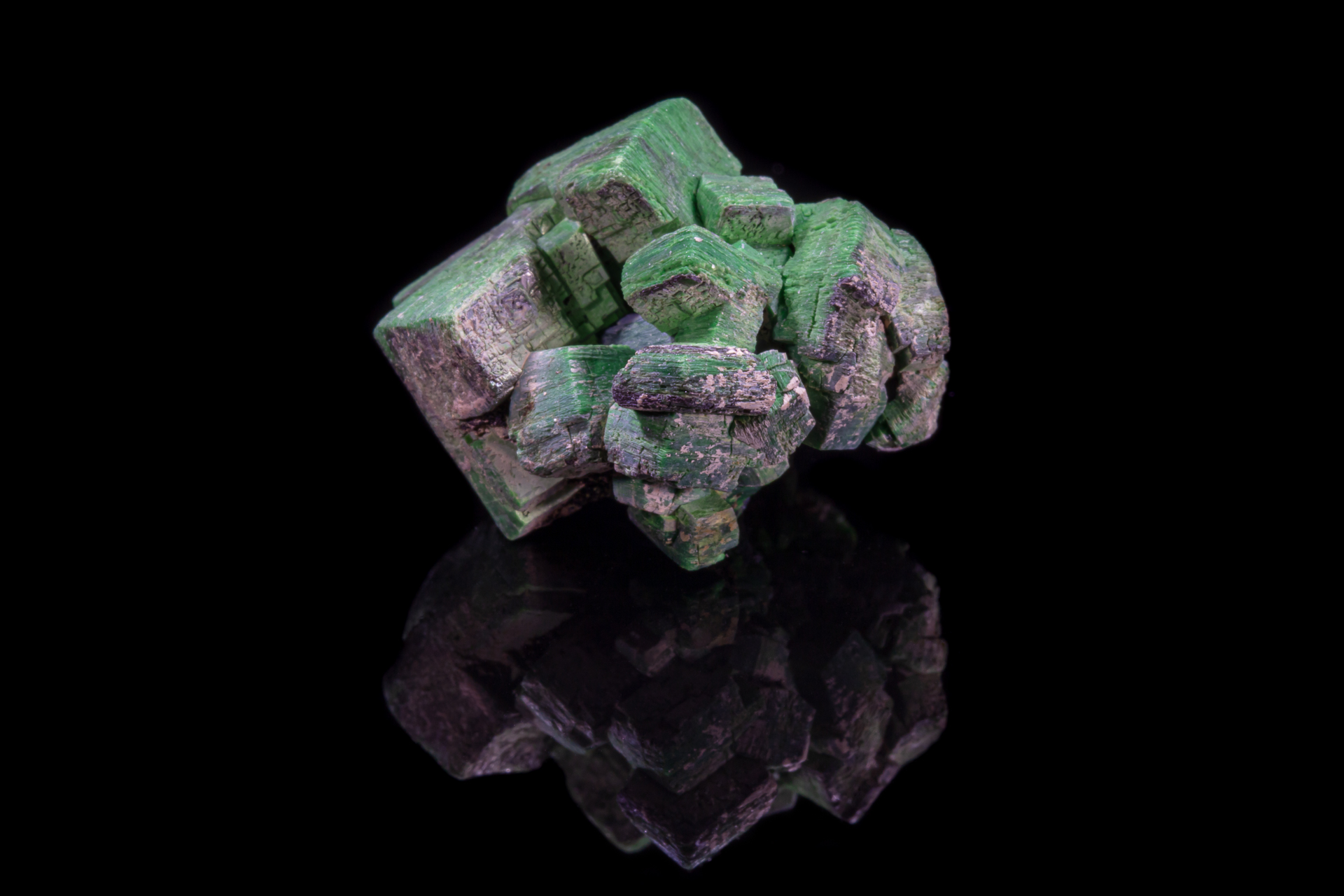Torbernite
Formula: Cu(UO2)2(PO4)2 · 12H2O
Species: Phosphates
Colour: Emerald-green, grass-green. leek green, siskin green, apple green
Lustre: Sub-Adamantine, Vitreous, Waxy, Pearly
Hardness: 2 – 2½
Specific Gravity: 3.22
Crystal System: Tetragonal
Member of: Autunite Group (uranyl phosphates and arsenates)
Name: Named in 1793 by Abraham Gottlob Werner in honor of Torbern Olof Bergmann [1735 Sweden –1784, Sweden], Professor of Chemistry and Physics, University of Uppsala (Sweden). Bergmann succeeded Johan Gottschalk Wallerius at Uppsala. Bergmann was one of the most important chemists and mineralogists of the eighteenth century. He published on mineralogical classification, Sciagraphia Regni Mineralis, and studied nickel and bismuth. He researched and published on quantitative chemical analysis and the chemical affinity of the elements, the latter which led to more sophisticated theories. Bergmann was honored as a Knight of the Royal Order of Vasa and the Lunar crater Bergmann was named for him. His students included Karl Wilhelm Scheele, Juan José de Elhuyar (co-discoverer of tungsten), and Johan Gadolin.
Type Locality: Johanngeorgenstadt, Erzgebirgskreis, Saxony, Germany
A secondary mineral found in the oxidized zones of some uraniferous copper deposits. Often dehydrated to metatorbernite (note that also transparent crystals can already be metatorbernite).
Torbernite, also known as chalcolite, is a relatively common mineral. It is a radioactive, hydrated green copper uranyl phosphate, found in granites and other uranium-bearing deposits as a secondary mineral. The chemical formula of torbernite is similar to that of autunite in which a Cu2+ cation replaces a Ca2+ cation. Torbernite tends to dehydrate to metatorbernite with the sum formula Cu[(UO2)(PO4)]2(H2O)8.,

